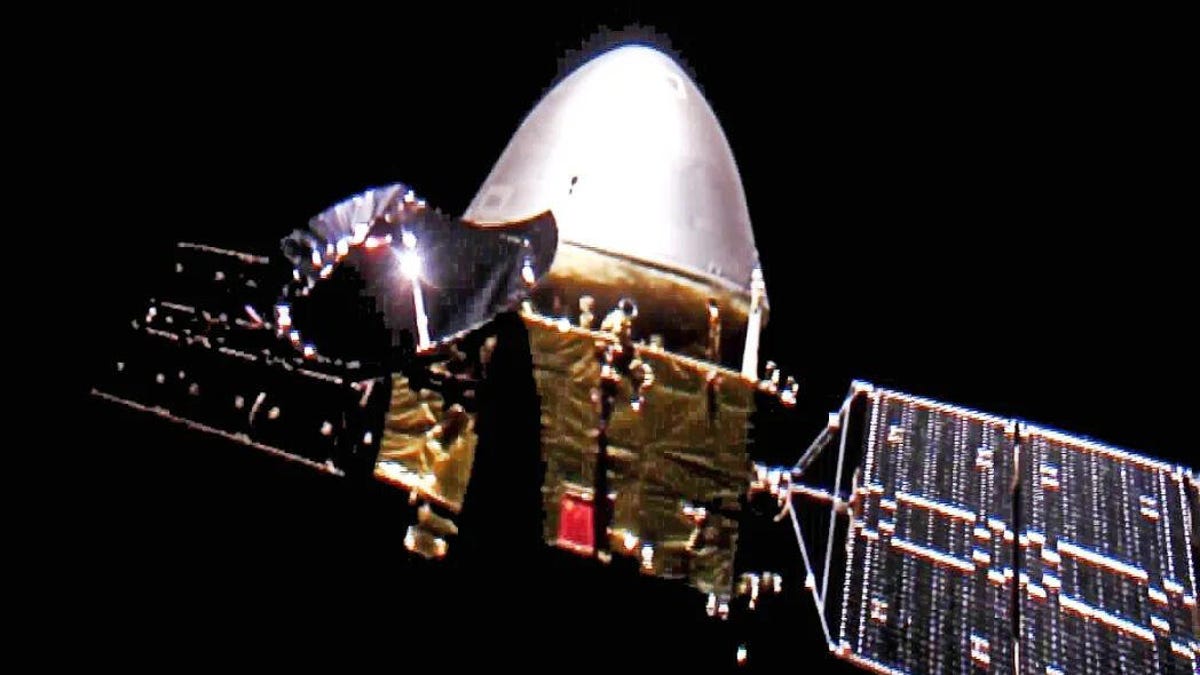Here's the first 'selfie' of China's Tianwen-1 spacecraft on its way to Mars
The 'deep space self portrait' was released to coincide with National Day in China.

Tianwen-1 is en route to Mars, hoping to make China the third nation to successfully land on the red planet.
This is our first look at China's Tianwen-1 spacecraft on the way to Mars. Against the black backdrop of the eternal void, but shining in the sun, Tianwen-1 has its solar panels The Martian exploration mission, which launched in July, is travelling away from the Earth and scheduled to reach the red planet in Feb. 2021 and make a controlled landing in May.
The image was released by the Chinese National Space Agency (CNSA) and the Chinese Lunar Exploration Program (CLEP) on the National Day of the People's Republic of China. In a blog post, the team write the probe is now nearly 15 million miles from the Earth and is "in good condition." The post details how the golden orbiter and silver landing device are "shining brightly" and highlights China's national flag, which can be seen on the bottom right corner of the probe.
It also claims this is the first "deep space self-portrait" of a Chinese probe. It's a selfie. Of a spacecraft. On the way to Mars.
2020 ain't so bad, I guess.
The camera took a few pictures and then became space junk.
To snap the image, Tianwen-1 released a tiny, wide-angle camera. You can see it being hurled away from the spacecraft. As it departed it took an image every second and then relayed the images back to the spacecraft, which forwarded them back to Earth. The camera had a single mission and, until it reaches another planetary body, it's doomed to drift aimlessly in space, adding to the chunks of space debris that circle the Earth.
Sad news for the camera, but it did get a few good shots at least.
The post also details the launch of Chang'e 5, the next Chinese lunar exploration mission, which is set to launch "at the end of this year." No official date has yet been announced but the mission plans to return samples from the lunar surface for study back on Earth.
h/t to Andrew Jones on Twitter.

